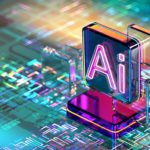

This October, GM released software that would allow third-party developers to design apps for its vehicles. These apps could interact with a vehicle’s infotainment system as well as its hardware, from the lights to the A/C, and this opens up a world of possibilities for onboard convenience and connectivity. The news also signals the emergence of a new automotive app market, as future app options won’t exclusively be GM’s proprietary apps.
Foundations for an App Store
GM’s decision to make some application programming interfaces (APIs) open-source takes a note right out of Apple’s playbook, as Apple’s historic move to enable third-party development spurred a tremendous period of innovation, and soon anyone with an iPhone had access to a galaxy of new apps and tools. If developers in the automotive industry respond the same way, anyone behind the wheel of a GMC, Chevrolet, or Buick could one day have a similar app store at their fingertips.
Pioneering a New Industry
By introducing its own APIs early, GM hopes that its interfaces will become the industry standard for automotive app development and that other manufacturers will follow suit. When developers only have one or two operating systems to write code for (think iOS and Android), it’s easier for them to create a couple of versions of their apps.
However, if every manufacturer decided to stick to their own proprietary APIs and expect developers to code apps just for them, then the app market likely wouldn’t take off as quickly as it did for smartphones, and certain apps might not be available for some makers at all if the developers don’t deem it worthwhile.
Forging Ahead
While GM’s open-sourcing decision is an early step in expanding the automotive app industry, it’s unclear how long it will be before the automotive industry has an app market that resembles anything like the smartphone industry. However, the company still sees ample reason to allow third-party developers into its sphere, as software development accounts for a substantial percentage of modern engineering costs. According to a white paper by the consultancy firm SBD Automotive, automakers around the world invest more than $1 billion per year in software research and development.
Keeping Up with Innovation
Markets change. That’s why it pays to stay ahead of the curve with a dynamic and innovative marketing approach. If you want to reach potential customers even as the automotive industry continues to change, contact us to see what Strong Automotive can do for you.
Posted
John Paul Strong
John Paul Strong combines his two decades of automotive marketing experience with a team of more than 150 professionals as owner and CEO of Strong Automotive.
Explore
Recent Posts


How AI Impacted the Automotive Industry in 2025

Build Smarter Digital Campaigns with Social-First Strategy
Archive
